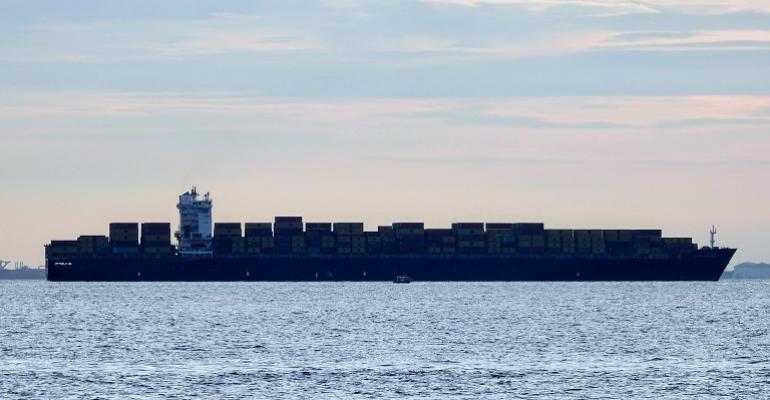In a panel discussion called by the World Economic Forum in Gothenburg, Sweden on Monday, APM Terminals Chief Executive Officer, Keith Svendsen, addressed the need to ‘kick-start’ the eco-system in ports to enable the greater use of renewable energy sources. While highlighting APM Terminals’ achievement of operating on 40% renewable energy, he reiterated the company’s goal of achieving 100% by 2030 – a goal that makes it an industry front-runner.
APM Terminals has committed to achieve 65% absolute reduction of Scope 1 and Scope 2 emissions by 2030 (from the 2022 baseline) and net zero in 2040. Since 2020, the company has reduced absolute Scope 1 and 2 emissions by 13%, and 40% of electricity demand is now procured by renewable resources.
Enabling customers
Beyond tackling its own emissions, APM Terminals has taken a leadership position in facilitating decarbonisation for its shipping line and landside customers. Moves such as the provision of Shore Power to vessels in port, as supported by EU funding, will be expanded upon with four further locations due to offer the emissions-reducing technology (Gijón, Rijeka, Aarhus and Gothenburg).
Svendsen was joined at the event by Kim Saaby Hedegaard, CEO of Power-to-X (PtX) and Robert Falck, CEO and founder of Swedish technology company, Einride. Moderated by former Dutch Deputy Minister for Foreign Affairs and current Board member at the Mission Possible Partnership, Dick Benschop, the discussion, held at the Clarion Hotel Draken, entitled ‘Catalyzing global network infrastructure’ aimed to achieve a high-level understanding of the progress and gaps between multi-fuel and clean power supply and infrastructure implications.
Broader port players
APM Terminals Chief Executive Officer, Keith SvendsenIn his address, Svendsen cited examples such as APM Terminals’ Gothenburg’s Electric Truck fast lane as creating an appetite and ease of use for its customers in creating end-to-end decarbonised logistics supply chains. While he said APM Terminals will continue to upgrade its own infrastructure, he noted that “the broader port ecosystem needs to play ball, too. Achieving net-zero must be a collective effort. It requires the entire industry to move forward together.”
Toward this end, APM Terminals co-founded the Zero Emission Port Alliance (ZEPA), adding its voice to the 12 current industry members calling to make battery-electric container handling equipment (CHE) affordable, accessible and attractive by 2030.
PPPs vital
“Public-private partnership is vital to secure stable renewable energy sources, and ensure efficient rollout of the power infrastructure,” Svendsen told the group.
He pointed out that, currently, low emissions fuels are “three to four times more expensive than fossil fuels. This is putting the pace of transition in shipping at risk.” He warned, “as an industry, we cannot absorb that cost and still compete commercially with operators and traders that are burning fossil fuels, and the lack of demand discourages fuel suppliers from investing in production capability for green fuels.”
Supply and Demand
Svendsen used the platform to call on the International Maritime Organization to decide on a feasible pricing mechanism by 2025 to enter into force by 2027. “Only in this way, can we increase the demand and supply of clean fuels,” he said.
In closing, Svendsen said there was a need to open up conversations about planning infrastructure in the future with joint commitments from governments and other stakeholders to accelerate the decarbonisation journey “in order that societies, communities… everyone, can reap the benefits of decarbonisation.”
Source: APM Terminals






